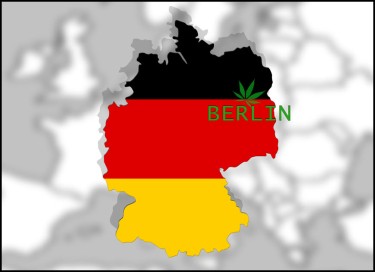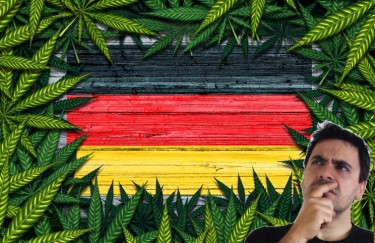
The Guide to Growing Cannabis Outdoors in Europe (English Edition)
Marijuana has been illegal in Germany for a long time, but now that is starting to change. The government has already begun cultivating and distributing medical marijuana, and the way it’s going about it is one to be copied for other medical programs. If you want to produce in Germany, you have to know how to deal with the German climate.
As in any country, you will experience a variety of challenging and mild climate zones in Germany. While medical marijuana is sold through dispensaries in a controlled, store-like environment, growing the plant in Germany is a different story. Although Germany has different environments within its borders, today we will focus on the Northeast, South, Coast and West.
Grows in March
As spring slowly approaches, preparations for the growing season can begin. Regardless of where you live, you should have started germinating your seeds by the beginning of the month. When it’s warm enough, you can start preparing the outdoor growing area, especially if you’re in the warmer parts of the Northeast or West. Growers near Bavaria or the coast should watch out for inclement weather.
Grows in April
As the sun shines longer and things heat up, it’s officially the start of the growing season. In warmer areas like Düsseldorf in the north-east or Frankfurt am Main you may be able to plant directly in the ground outdoors. You can also plant them in large pots so you can take them inside when the weather is bad. Alternatively, you can play it safe by building a greenhouse to maintain a constant temperature and humidity level for your plants while protecting them from the elements.
Places like Hamburg with less sun exposure can also choose a greenhouse with artificial lighting to ensure the plants get what they need.
Grows in May
The goal here is to ensure that the plants settle happily when the temperature starts to rise. Water them consistently and understand that plants that grow in rainy conditions like Lower Saxony and the surrounding area don’t need as much. People using greenhouses in the Northeast and Western regions with more sun need to monitor the heat. As outside temperatures of 17°C and more can lead to extra warm greenhouses, it is recommended to open the windows.
Grows in June
It is summer. That means you can see the plants multiply thanks to the increased daylight and warmer weather, and you can take care of them. Make sure there is a support system in place for taller plants. Note that Germany has rainfall throughout the summer, so make sure you strike a healthy balance between rain and heat.
Grows in July
It doesn’t matter where you are; July is the hottest month of the year with temperatures between 22°C in Hamburg and hot 26°C in Frankfurt am Main. Add that to the still long days and your main focus will be making sure the soil stays hydrated. Despite the fact that rainfall is still high, even peaking in Frankfurt at an average of 44mm, it can still get dry in just one day. It is advisable to install an irrigation system to do some of the work for you. Then your main task will be the management of the irrigation system itself.
If you’re growing regular seeds, one of your other main concerns at this point is sex. Look for signs of pollen sacs forming around the nodules. Taking out males on sight is essential to maintain high yields and female potency. If not removed, they eventually pollinate the females and cause them to produce seeds. Unless you’re looking for seeds, this isn’t ideal.
Grows in August
As August begins, plants are taking notice of the shorter daylight hours, and growers growing photoperiod strains are in for a treat. This is undoubtedly the flowering phase. Since the plants will be fully developed in the first few weeks, now is the time to prune and defoliate them if you haven’t already done so. The goal of this care, and not discretion, is to ensure that all buds receive adequate sunlight. Heat waves around this time are not impossible, so you should maintain a regular watering routine.
Grows in September
As summer draws to a close and fall begins, the plant’s buds grow larger thanks to the increased production of trichomes and pistils. The scent of the plants will begin to fill the air due to the pungent odors that generally accompany large flowers. Don’t get too distracted by the smell, however, as you’ll need to make sure your plants are sheltered when it starts to rain. Although the rain won’t be as heavy as in the summer, make sure your plants are protected by a tarp or in a greenhouse to begin with.
Grows in October
Fall is officially here and you are close to the finish line after months of hard work. There is little to no rain around this time, but overwatering and root rot can still occur. If you still have some warmth and sunlight in your location, you can let your plants grow a little longer to maximize your yield.
Grows in November
November marks the end of the growing season, and anyone who has yet to harvest should start doing so. With no more cultivation possible, the only chores in the garden are preventive pest control, removing leaves, and burning waste that cannot be used as compost. After curing and drying your cannabis, you can finally enjoy the fruits of your labor.
FINAL EFFECT
The fate of cannabis in Germany still has some unclear aspects, but not everything is a mystery. We know that it has become more and more popular and will only gain more popularity. As a result, more marijuana has to be grown, which in turn means sourcing it from overseas suppliers is no longer enough (although some say that’s not already the case). Taking all of this into account, we will likely see an increase in German growers soon.
GERMANY AND LEGALIZATION, READ MORE…

GERMANY LEGALIZES RECREATIONAL Marijuana, Europe Next?
OR..

GERMAN MEDICAL MARIJUANA PROGRAM IS GROWING SUPER FAST, WHY?

Post a comment: